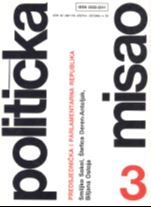Kraj Sovjetskog Saveza — Perestrojka bez Gorbačova
The End of the Soviet Union — The Perestroyka Without Gorbachov
Author(s): Branko CaratanSubject(s): Government/Political systems, Post-War period (1950 - 1989), Transformation Period (1990 - 2010), History of Communism
Published by: Fakultet političkih znanosti u Zagrebu
Keywords: Soviet union; Perestroika; Gorbachov; communist party; dissolving of communist party;
Summary/Abstract: Although Gorbachov’s rule was relatively short, a little less than seven years, it has left traces that cannot be erased. From its very beginning it was clear that after Gorbachov neither the Soviet Union nor the world would be the same as before. Gorbachov fulfilled his role first by starting the process of changes and as he was unable to accomplish the reforms that he had started or did not have the opportunity to do so, he was compelled to leave his place to others. It could not be said that the policy of Gorbachov’s reforms was unlinear, uncompromising, and faultless. It was the result of a relationship between existing forces, of the conflict between the advocates and the opponents of the perestroyka. The Moscow Coup in the summer of 1991 turned that permanent conflict into an open confrontation as those who took part in the Putsch clarified through their attack the positions of both the conservatives and the radical reformers. The failed Coup radicalized all the processes of transformation in Soviet society and removed the barriers which prevented the changes to break through the limits of the system. Within this framework the two most important consequences are certainly the dissolving of the Communist Party of the Soviet Union and the disintegration of the Soviet Union itself.
Journal: Politička Misao
- Issue Year: XXIX/1992
- Issue No: 03
- Page Range: 48-66
- Page Count: 19
- Language: Croatian

